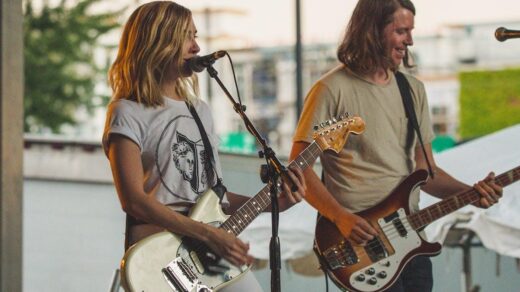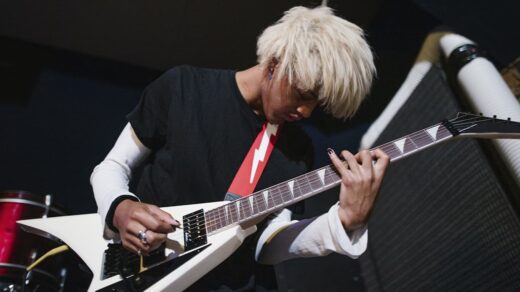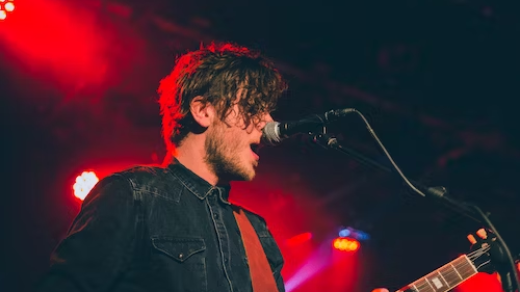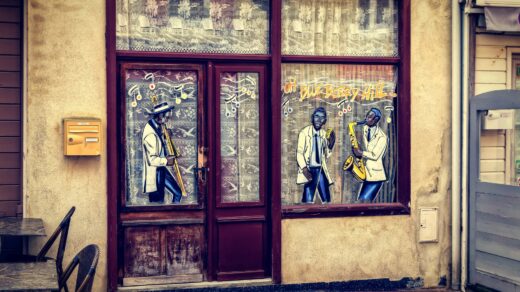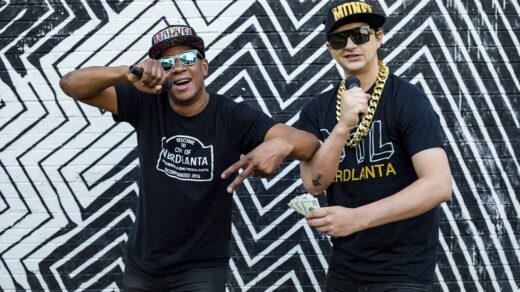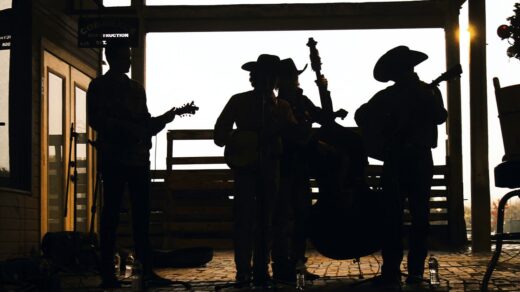The emergence of folk-punk was preceded by a wave of popularization of folk-rock as such. If we could go back 60 years and find ourselves in the States, we would be able to catch the heyday of this genre. Folk rock combined elements of rock and folk – simply put, folklore.
The new genre that was rapidly gaining crazy popularity began, oddly enough, with a cover of Bob Dylan’s “Mr. Tambourine Man” by The Byrds.
It should be noted that at that time folk music was often referred to: for example, its influence is evident in the songs “Hide Your Love Away” and “I’m a Loser” by The Beatles. The genre’s recognizable features include clean vocals without the use of sound-altering effects and the legendary jangling electric guitar sound, which was first used in the music of The Searchers and in the recordings of The Beatles – particularly when George Harrison used the 12-string Rickenbacker guitar.
In America the genre was developed by Crosby, Nash & Young, Buffalo Springfield and Stills. In England, Fairport Convention, Pentangle, Steeleye Span, and Donovan. The symbiosis of ethnic, folk music and rock elements was also common in Europe and Scandinavia. It did not take root only in Saudi Arabia and Asian countries because of cultural and political circumstances.
Folk-rock set the tone for the further development of musical culture, giving impetus to the appearance of its many subgenres. Thus, two decades later, in the music scene bursts folk-punk.
Features of the style
Now the folk motifs sounded in punk rock as well – both in the music of apolitical bands and in the works of bands with a clearly expressed civil position. The style owes its appearance directly to the Irish band The Pogues. Although the band is considered to be Irish because it uses the Celtic motifs, it was founded in London.
In 1982, the band was assembled by vocalist-guitarist Shane McGowan, of course toothless and perpetually drunk, in selected clichés of punk culture. Shane himself assured everyone that he couldn’t remember being sober since he was fourteen.
The band, as is typical of punk ideology, actively manifested its political stance. Because of the influence of the authorities the guys had to change the music video for the song “A Pair of Brown Eyes” where they spat on the portrait of Margaret Thatcher.
Despite the general atmosphere of drunken revelry and debauchery, the band not only made friends with punk rock and folk music, but also took the new genre of folk-punk to unprecedented heights. Three albums reached the top 10 of the UK charts, the second position was taken by the single “Fairytale of New York”, and a number of compositions climbed to the top of the Irish charts.
The most successful representatives of this style in the UK are the band Chumbawamba, musicians Attila The Stockbroker and Billy Bragg.
The United States of America was not inferior – on their stage folk-punk was presented by the most commercially successful band Violent Femmes.
The team’s debut album contained ten songs written by the group’s founder Gordon Gano while still in high school. A miracle happened, and Violent Femmes ended up selling three million copies, becoming three times platinum and never making the Billboard charts.
Other bands such as The Dead Milkmen, Hüsker Dü, and Articles of Faith were also drawn to the folk sound. A little later the German band Across The Border brought a new sound to the genre.
The Dead Milkmen – Punk Rock Girl HD
By the beginning of the 90s, the folk-punk boom had passed and interest in it diminished. At the beginning of 90s the interest to folk-punk went down and it got less and less popular in its subgenres – Celtic-punk and jipsy-punk.
Celtic-punk
It’s not hard to guess that this time punk rock merged with Celtic folk motifs. The distinctive feature of musical bands of this style is the use of ethnic instruments along with the classic rock stuff. So in the Celtic punk you can hear the sounds of bagpipes, fiddle accordion, fiddle, whistle, banjo or mandolin.
Despite the fact that the lyrics are based on Irish and Scottish folklore, and their themes are most often the plight of peoples, republicanism, independence and life of these diasporas, politics do not dominate in the lyrics of this genre.
Dropkick Murphys.
A Boston Celtic band founded in 1996 by Mike McColgan, Ken Casey, and Rick Barton.
The band got its name from the former soccer player, soon to become a wrestler, John Murphy, nicknamed “Dropkick” (as wrestling calls a jump kick). Although the lineup has changed, one thing has remained unchanged – they all honor the cultural traditions of the Irish people and perform annually at the St. Patrick’s Day festival in Boston.

